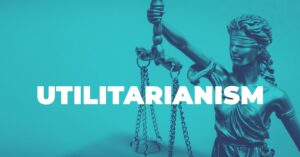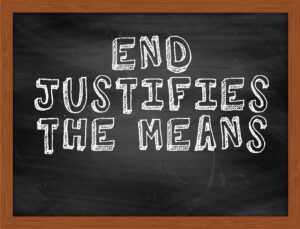Utilitarianism is an ethical theory that focuses on the outcomes of actions and choices. It is a form of consequentialism, which means that the rightness or wrongness of an action depends on its consequences, not on its motives or rules. Utilitarianism holds that the most ethical choice is the one that will produce the greatest good for the greatest number of people. This means that utilitarianism aims to maximize happiness or pleasure and minimize unhappiness or pain for everyone affected by an action.Utilitarianism is a practical and reason-based approach to ethics, because it can be applied to any situation and it relies on empirical evidence and rational calculation. However, utilitarianism also has some limitations and criticisms, such as:
– It can be difficult to predict the future consequences of an action, especially in complex situations with many variables.
– It can conflict with other values, such as justice, rights, or fairness, which may not be reducible to happiness or pleasure. For example, utilitarianism may justify sacrificing the life of one innocent person to save four others, but this may seem morally wrong to many people.
– It can be demanding and impartial, requiring people to act for the common good even if it goes against their own interests or preferences. For example, utilitarianism may require people to donate most of their income to charity or to help strangers rather than their friends or family.

Utilitarianism
Utilitarianism is a major and influential ethical theory that has shaped many aspects of modern society, such as law, politics, economics, and social reform. It was developed by the English philosophers and economists Jeremy Bentham and John Stuart Mill in the late 18th and 19th centuries, and it has been refined and modified by many other thinkers since then. Some of the major treatises on utilitarianism are:
- Bentham, J. (1970). An Introduction to the Principles of Morals and Legislation (1789), ed. by J. H Burns and HLA Hart, London.
- Hare, R. M. (1981). Moral Thinking: Its Levels, Method, and Point. OUP Oxford.
- Mill, J. S. (1863). Utilitarianism. London: Parker, Son, and Bourn, West Strand.
- Paley, W. (1785). The Principles of Moral and Political Philosophy (London: R. Faulder).
- Sidgwick, H. (1874). The Methods of Ethics. Macmillan.
Utilitarianism & Economics
Utilitarianism and economics are related because both fields are concerned with the consequences of actions for the well-being of individuals and society. Utilitarianism evaluates actions based on how well they favour the majority, while economics analyzes how people make choices based on their preferences and constraints. One way to apply utilitarianism to economics is to use the concept of social welfare, which is the sum of individual utilities at any outcome. For example, a utilitarian economist might support a policy that increases social welfare by redistributing income from the rich to the poor, as long as the gain in utility for the poor outweighs the loss in utility for the rich. Another way to apply utilitarianism to economics is to use the concept of optimal taxation, which is the design of a tax system that maximizes social welfare subject to some constraints. For example, a utilitarian economist might advocate for a progressive tax system that taxes higher incomes at higher rates, as long as the tax revenue is used efficiently and does not discourage productive activities. A challenge for both fields is to deal with situations where population size or quality of life are variable, which may affect how utility is calculated and distributed.
Utilitarianism & the Law
The law is a system of rules and principles that regulate the conduct and relations of individuals and groups in society. The relation between utilitarianism and the law is that utilitarians believe that law must be made to conform to its most socially useful purpose, which is to increase happiness, wealth, or justice. Utilitarianism and the law are related because both fields are concerned with the consequences of actions for the well-being of individuals and society² Utilitarians evaluate laws based on how well they promote the general welfare, while legal scholars analyze laws based on how they affect the rights and interests of different parties.
One way to apply utilitarianism to the law is to use the concept of law and economics, which is a school of modern utilitarianism that has achieved prominence in legal circles. Law and economics proponents believe that all law should be based on a cost-benefit analysis in which judges and lawmakers seek to maximize societal wealth in the most efficient fashion. Another way to apply utilitarianism to the law is to use the concept of legal reform, which is the process of changing or improving existing laws or creating new ones. Legal reformers may advocate for laws that aim to reduce crime, poverty, inequality, or discrimination, as long as they increase happiness or pleasure and decrease unhappiness or pain for the majority of people. A challenge for both fields is to deal with situations where there are conflicts of interest, trade-offs, uncertainties, or unintended consequences, which may affect how happiness or pleasure is calculated and distributed.



